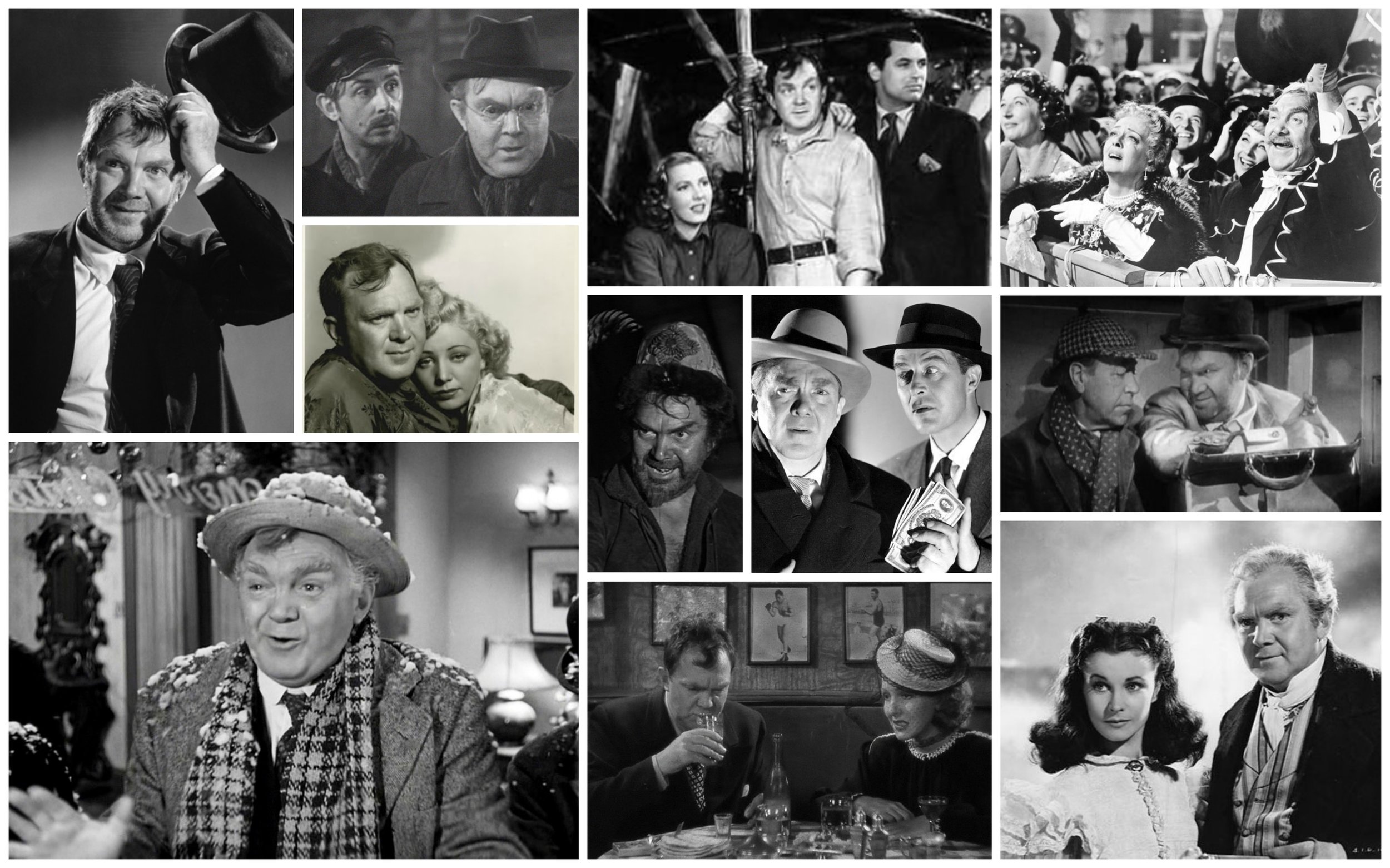A New Sybil Bruncheon's "WHO'Z DAT?"... THOMAS MITCHELL (July 11, 1892 – December 17, 1962)
/Darlings! Mummy has made a decision! After reading dozens of posts and having hundreds of conversations with well-meaning folks who just don't know about the great CHARACTER actors who gave films the depth and genius that surrounded and supported the so-called "stars", I am going to post a regular, special entry called SYBIL'S "WHO'Z DAT?"....there'll be photos and a mini-bio, and the next time you see one of those familiar, fabulous faces that you just "can't quite place".......well, maybe these posts will help. And feel free to share them with your friends! Some of these actors worked more, had longer and broader careers, and ended up happier, more loved, and even wealthier than the "stars" that the public "worships". (I think there may be a metaphor in that! What do you think???)… Well, this actor qualifies absolutely as an icon of the "Character STAR" set.... bumbling, wise, a smart aleck, a doddering fool, comedies, dramas, even tragedies! His face, and voice are unforgettable and irreplaceable.... he's one of the folks that I hope is waiting to sit and have coffee ‘n’ croissants with me in a Heaven-For-Actors cafe.... He’s Thomas Mitchell (July 11, 1892 – December 17, 1962). In addition to being an actor, he was also a director, playwright, and screenwriter.
Born Thomas John Mitchell was born to Irish immigrants in Elizabeth, New Jersey, the youngest of seven children. He came from a family of journalists and civic leaders. Both his father and brother were newspaper reporters, and his nephew, James P. Mitchell, later served as Dwight Eisenhower’s Secretary of Labor. The younger Mitchell also became a newspaper reporter after graduating from St. Patrick High School in Elizabeth. However, Mitchell soon found that he enjoyed writing comic theatrical skits much more than chasing late-breaking scoops. He became an actor in 1913, at one point touring with the Charles Coburn Shakespeare Company. Coburn provided young Mitchell with some much-needed experience in the works of William Shakespeare. In late 1916 Mitchell debuted on Broadway in the original play UNDER SENTENCE and would be a fixture on the Great White Way steadily from then to 1935, working on a total of 29 plays. Even while playing leading roles on Broadway into the 1920s Mitchell would continue to write. One of the plays he co-authored, LITTLE ACCIDENT, was eventually made into a film (three times) by Hollywood, and with CLOUDY WITH SHOWERS (1931).
Although, Mitchell's first credited screen role was in the 1923 silent film SIX CYLINDER LOVE, his first breakthrough role was as the embezzler in Frank Capra’s film LOST HORIZON (1937). Over the next few years, Mitchell appeared in many significant films. Known for his amazing range in both comedy and drama, and even in tragedy, Thomas Mitchell was respected by directors Frank Capra, Howard Hawks, and John Ford as one of the great American character actors, whose credits read like a list of the greatest films of the 20th century. Forty-three of the fifty-nine films in which he acted, were made in the 10-year period from 1936-1946. In 1939 alone he had key roles in STAGECOACH, MR. SMITH GOES TO WASHINGTON with James Stewart, ONLY ANGELS HAVE WINGS with Cary Grant, THE HUNCHBACK OF NOTRE DAME with Charles Laughton, and GONE WITH THE WIND with Vivien Leigh. He has the distinction of having performed in three of the Oscar nominated films of that year….an unbroken record. Having been nominated for an Oscar for his complex and very sympathetic Dr. Kersaint in THE HURRICANE (1938), and probably better remembered as Scarlett O'Hara's loving but doomed father in GONE WITH THE WIND, it was for his performance as the drunken Doc Boone in STAGECOACH, co-starring John Wayne (in Wayne's breakthrough role), that Mitchell won the Best Supporting Actor Academy Award. In his acceptance speech, he quipped, "I didn't know I was that good". Throughout the 1940s and 1950s, Mitchell acted in a wide variety of roles in productions such as 1940's SWISS FAMILY ROBINSON, 1942's MOONTIDE, 1944's THE KEYS OF THE KINGDOM, (as an atheist doctor) and HIGH NOON (1952) as the town mayor. He is probably best known to audiences today for his role as sad sack Uncle Billy in Capra's Christmas classic IT'S A WONDERFUL LIFE (1946) again with James Stewart.
From the 1950s and into the early 1960s, Mitchell worked primarily in television, appearing in a variety of roles in some of the most well-regarded early series of the era, including PLAYHOUSE 90, DICK POWELL'S ZANE GREY THEATER (in a pilot episode that became the CBS series JOHNNY RINGO), and HALLMARK HALL OF FAME productions. In 1954, he starred in the television version of the radio program, MAYOR OF THE TOWN. And in 1955, he played Kris Kringle in THE 20TH CENTURY-FOX HOUR version of THE MIRACLE ON 34TH STREET opposite Teresa Wright and MacDonald Carey. In 1959, he starred in thirty-nine episodes of the syndicated television series, GLENCANNON, which had aired two years earlier in the United Kingdom. In the early 1960s, Mitchell originated the stage role "Columbo", later made famous on NBC and ABC television by Peter Falk. Columbo was Mitchell's last stage role. His last film role was in POCKETFUL OF MIRACLES (1961) with Bette Davis and again directed by Frank Capra.
In 1953, Mitchell became the first man to win the "triple crown" of acting awards (Oscar, Emmy, Tony); the Academy Award for Best Supporting Actor for 1939's STAGECOACH, an Emmy 1952 for Best Actor for TV’s THE DOCTOR, and the following year a Tony Award for best performance by an actor, for the musical HAZEL FLAGG, based on the Carole Lombard film NOTHING SACRED (1937).
Mitchell died at age 70 from peritoneal mesothelioma in Beverly Hills, California. He had been married twice; Rachel Hartzell (1937 to 1939) and Ann Stuart Breswer, first from 1915 to 1935, and remarried to her 1941 to 1962, by whom he had one daughter, Anne. He has two stars on the Hollywood Walk of Fame, one for his work in television at 6100 Hollywood Boulevard, and a second star for his work in motion pictures at 1651 Vine Street.
[Want to read other fun and funny stories here on SybilSez.com? Just enter any topic that pops into your head in the "search" window on the upper right! Who knows what might come up?...and feel free to share them with your friends!]











